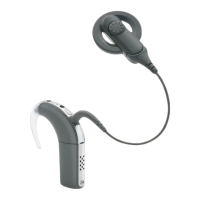What to do if Cochlear Recording Equipment sound processor does not work?
- AAshley TaylorJul 29, 2025
If your Cochlear Recording Equipment's sound processor isn't working, try the following: * Ensure the sound processor is turned on. * Check that the battery door is completely closed and the battery is inserted correctly. * Replace or recharge the battery if it's dead. * Verify that the audio accessory program is not active without an accessory connected.












